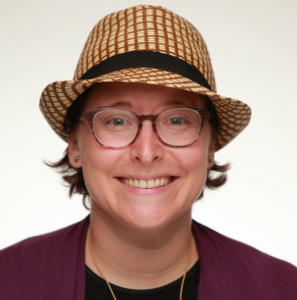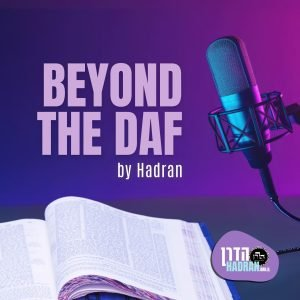The fifth chapter of Zevachim describes the precise way the korbanot were offered – with a focus on the use of the external altar – known alternatively as the מזבח הנחושת, the מזבח החיצון, or the מזבח העולה. In this shiur we offer a glimpse into the role of the altar in defining the character of the Mishkan/Mikdash
Zevachim 47
Questions? Comments? Email dinanddaf@gmail.com
- רמב”ן שמות כה: ב
כאשר דבר השם עם ישראל פנים בפנים עשרת הדברות…וישראל קבלו עליהם לעשות כל מה שיצום על ידו של משה, וכרת עמהם ברית על כל זה, מעתה הנה הם לו לעם והוא להם לאלהים …הנה הם קדושים ראוים שיהיה בהם מקדש להשרות שכינתו ביניהם. ולכן צוה תחלה על דבר המשכן שיהיה לו בית בתוכם מקודש לשמו, ושם
ידבר עם משה ויצוה את בני ישראל.
והנה עקר החפץ במשכן הוא מקום מנוחת השכינה שהוא הארון, כמו שאמר (להלן כה כב) ונועדתי לך שם ודברתי אתך מעל הכפרת, על כן הקדים הארון והכפרת בכאן כי הוא מוקדם במעלה, וסמך לארון השלחן והמנורה שהם כלים כמוהו, ויורו על ענין המשכן שבעבורם נעשה…
וסוד המשכן הוא, שיהיה הכבוד אשר שכן על הר סיני שוכן עליו בנסתר. וכמו שנאמר שם (כד:טז) וישכן כבוד ה’ על הר סיני…כן כתוב במשכן וכבוד ה’ מלא את המשכן (מ:לד)… והיה במשכן תמיד עם ישראל הכבוד שנראה להם בהר סיני
When God spoke the Decalogue to Israel…and they accepted upon themselves to do what God would command…they became his nation, and He, their God …And they were then worthy of having God’s Presence dwell among them.
Behold the most important element of the Tabernacle is the place of God’s Presence, and that is the Ark- because God spoke to Moses from between the “cherubim” atop the Ark.
The secret of the Tabernacle: it contains God’s Presence from Mt. Sinai in a hidden fashion.
- רמב”ן השגות על ספר המצוות של הרמב”ם מצות עשה ל”ג
כתב הרב המצוה ל”ג שנצטוו הכהנים ללבוש בגדים לגדולה וכבוד ואז יעבדו במקדש והוא אמרו יתעלה ועשית בגדי קודש לאהרן אחיך…
…לא נמנה אנחנו עשיית השלחן ומזבח ומנורה מצוה מפני שנצטוינו לשום לחם לפני ה’ תמיד וצוה אותנו בהכשר העבודה הזאת שהיא לשום אותו בשלחן מתואר כן ושיסודר לנו שתהיה ההדלקה הזו במנורה של זהב משקלה וענינה כן וכן, והנה הם תשמישי קדושה…
אצלי עשיית הארון והכפרת לשום שם העדות תמנה מצוה בפני עצמה…והנה מכל מקום היא מצוה מיוחדת בפני עצמה אינה הכשר מצוה אחרת כמנורה והמזבחות והשלחן, וכן הבגדים כדעת בעל ההלכות אינם אלא להכשר העבודות שנצטוינו בהן…
Rambam wrote: the 33rd commandment is that the kohanim were commanded to wear clothing for greatness and honor, and they they can worship in the Mikdash, and the verse is “And you shall make sacred vestments for your brother Aharon (Shemot 28:2)”…
[But] we do will not count the making of the table or the altar or the menorah as a commandment; because we were commanded to place there bread before God always, and God commanded us in the preparation of this worship which is to place it on the table, it is thus described. And so that it will be set up for us that this lighting shall be done on a menorah that is of gold, weighing such and such, etc., and these are items used for holiness…
By my count, the making of the ark and its cover (kaporet) in which to place the testimony (=luchot) will be counted as an independent mitzvah…As it is an independent mitzvah rather than a preparation for some other mitzvah as are the menorah, the altars and the table, and also as are the priestly vestments, in accordance with the Ba’al Halachot [Gedolot] they are only preparatory for the worship that we were commanded…
- רמב”ם ספר המצוות מצות עשה כ
והמצוה העשרים היא שצונו לבנות בית עבודה. בו יהיה ההקרבה והבערת האש תמיד ואליו יהיה ההליכה והעליה לרגל והקבוץ בכל שנה… והוא אמרו יתעלה “ועשו לי מקדש”…בנין בית הבחירה מצוה בפני עצמה. וכבר בארנו שזה הכלל הוא כולל חלקים ושהמנורה והשלחן והמזבח וזולתם כלם הם מחלקי המקדש והכל ייקרא מקדש…
The 20th commandment – to build for God a house of worship…And this is based on the verse, “And you shall make for Me a Sanctuary…”- construction of the Sanctuary is a separate commandment. Construction of the Sanctuary includes construction of its holy vessels (altar, candelabra, table, etc.)- They are all part of the Sanctuary. Ther are all called the Mikdash
- רמב”ם הלכות בית הבחירה א:א,ו
הלכה א מִצְוַת עֲשֵׂה לַעֲשׂוֹת בַּיִת לַה’ מוּכָן לִהְיוֹת מַקְרִיבִים בּוֹ הַקָּרְבָּנוֹת. וְחוֹגְגִין אֵלָיו שָׁלֹשׁ פְּעָמִים בַּשָּׁנָה שֶׁנֶּאֱמַר (שמות כה ח) “וְעָשׂוּ לִי מִקְדָּשׁ”. וּכְבָר נִתְפָּרֵשׁ בַּתּוֹרָה מִשְׁכָּן שֶׁעָשָׂה משֶׁה רַבֵּנוּ. וְהָיָה לְפִי שָׁעָה שֶׁנֶּאֱמַר (דברים יב ט) “כִּי לֹא בָאתֶם עַד עָתָּה” וְגוֹ’:
It is a positive commandment to construct a House for God, prepared for sacrifices to be offered within. We [must] celebrate there three times a year, as [Exodus 25:8] states: “And you shall make Me a sanctuary.”
The sanctuary constructed by Moses is already described in the Torah. It was only temporary, as [Deuteronomy 12:9] states: “For at present, you have not come unto [the resting place and the inheritance].”
…
הלכה ו ועושין במקדש שבעה כלים: מזבח לעולה ולשאר הקורבנות; וכבש שעולין בו למזבח, ומקומו לפני האולם משוך לדרום; וכיור; וכנו, לקדש ממנו הכהנים ידיהם ורגליהם לעבודה, ומקומו בין האולם ולמזבח משוך לדרום, שהוא
שמאל הנכנס למקדש; ומזבח לקטורת; ומנורה; ושולחן. ושלשתן בתוך הקודש לפני קודש הקדשים
The following utensils are required for the Sanctuary:
a) an altar for the burnt offering and other sacrifices;
b) a ramp to ascend to the altar. It was positioned before the Entrance Hall to the south.
c) a wash basin with a pedestal where the priests would sanctify their hands and feet for the (Temple) service. It was positioned between the Entrance Hall and the altar, to the left when entering the Sanctuary.
d) the altar for the incense offering,
e) the Menorah, and
f) the table [for the showbread].
The [latter] three were placed within the Sanctuary, before the Holy of Holies.
- יצחק הרשקוביץ, המזבח כבית לה’: עיון בתורת המקדש המימונית, הערה 11
http://www.biu.ac.il/JS/JSIJ/8-2009/Hershkowitz.pdf
בעניין זה יש להעיר שככל שהכלים היו פנימיים, כך פחת השימוש בהם. הארון השוכן בתוך קודש הקדשים איננו משמש לעולם כלי פעיל, וגם בפעם היחידה בשנה שבה נכנס הכהן הגדול למדורו של הארון – ביום הכיפורים, הוא מניח את מחתת הקטורת בין בדיו ולא עליו ממש. הכלי הבא המתואר בתורה הוא השולחן, שבו השתמשו רק אחת לשבוע, כאמור. במנורה היו מתעסקים פעמיים ביום: בעת ההדלקה ובעת ההטבה, ועל מזבח הזהב היו מקטירים פעמיים ביום. בכיור היה משתמש כל כהן שרצה לעבוד בעבודת התמיד לחלקיה, והמזבח, כאמור, ריכז סביבו כמעט את כל עבודת המקדש.
In this regard, it should be noted that the more internal the vessels were, the less they were used. The ark, which is located within the Holy of Holies, is never used as an active vessel, and even the only time a year that the High Priest enters the fire of the ark – on Yom Kippur – he places the incense burner between its legs and not directly on it. The next vessel described in the Torah is the table, which was used only once a week, as mentioned. The menorah was used twice a day: when it was lit and when it was offered, and incense was burned on the golden altar twice a day. The laver was used by any priest who wanted to work in the daily service, and the altar, as mentioned, centered around it almost all of the work of the Temple.
7. ברייתא דמלאכת המשכן, פרק יד
מהיכן היתה שכינה מדברת עם משה? ר’ נתן אומ’ מן האהל, שנ’ “וְנָתַתָּ֤ה אֹתוֹ֙ לִפְנֵ֣י הַפָּרֹ֔כֶת [אֲשֶׁ֖ר עַל־אֲרֹ֣ן הָעֵדֻ֑ת לִפְנֵ֣י הַכַּפֹּ֗רֶת אֲשֶׁר֙ עַל־הָ֣עֵדֻ֔ת] אֲשֶׁ֛ר אִוָּעֵ֥ד [לְךָ֖ שָֽׁמָּה]׃
” (שמות ל, ו),
ר’ שמעון בן עזאי או’ ממזבח הקטרת, שנ’ “וְשָֽׁחַקְתָּ֣ מִמֶּ֘נָּה֮ הָדֵק֒ [וְנָתַתָּ֨ה מִמֶּ֜נָּה לִפְנֵ֤י הָעֵדֻת֙ בְּאֹ֣הֶל מוֹעֵ֔ד אֲשֶׁ֛ר אִוָּעֵ֥ד לְךָ֖ שָׁ֑מָּה קֹ֥דֶשׁ קׇֽדָשִׁ֖ים תִּהְיֶ֥ה לָכֶֽם] “, (שם, לו)
תלמידיו של ר’ ישמעא’ או’ מאצל מזבח העולה שנ’ “עֹלַ֤ת תָּמִיד֙ לְדֹרֹ֣תֵיכֶ֔ם [פֶּ֥תַח אֹֽהֶל־מוֹעֵ֖ד לִפְנֵ֣י יְהֹוָ֑ה אֲשֶׁ֨ר אִוָּעֵ֤ד לָכֶם֙ שָׁ֔מָּה לְדַבֵּ֥ר אֵלֶ֖יךָ שָֽׁם]׃ ” (שם כט, מב).
From where did the Divine Presence speak to Moses? Rabbi Natan, or from the Tent, where it says, “And you shall put it before the curtain [which is over the Ark of the covenant in front of the cover that over the covenant] that I shall meet [with you there]” (Exodus 30:6).
Rabbi Shimon ben Azzai, or from the Altar of Incense, where it says, “Beat some of it into powder [and put some before the Pact in the Tent of Meeting, where I will meet with you; it shall be most holy to you. (Ibid., 36).]
The disciples of Rabbi Yishmael, said from the Altar of Burnt Offering, as it says, “a regular burnt offering throughout the generations [at the entrance of the Tent of Meeting before God. For there I will meet with you, and there I will meet with you,]” (Ibid., 29:44).
Symbolism
8. תנחומא תרומה י”א
“וצפית אותו נחושת – ולמה היה ציפויו נחושת? לכפר על מצח הנחושת, שנאמר ‘[מִדַּעְתִּ֕י כִּ֥י קָשֶׁ֖ה אָ֑תָּה] וְגִ֤יד בַּרְזֶל֙ עׇרְפֶּ֔ךָ וּמִצְחֲךָ֖ נְחוּשָֽׁה’”
And you overlay it with copper (Shemot 27:2) – Why was its overlay made of copper? To atone for the copper/bronze forehead, as is said: “[Because I know how stubborn you are,] and your neck is like an iron sinew, and your forehead bronze (Yeshayahu 48:4)
9. מדרש הגדול שמות כ”ז, ב
“‘וצפית אותו נחושת’ – ולמה נחושת? לומר לך מה נחושת זו אף על פי שמעלית חלודה היא מתמרקת, כך ישראל אף על פי שהן חוטאין אם עושים תשובה מתכפר להם”
“‘And you covered it with copper’ – and why copper? To tell you what copper is, even though it gets corroded, it can be polished, so Israel, even though they sin, if they repent, they are atoned for.”
10. מדרש הגדול Rabbi David Adani of Yemen
תנו רבנן: שני מזבחות הן, אחד זהב ואחד נחשת.
מזבח הזהב נמשל בנפשו שלאדם, ומזבח הנחושת בגופו שלאדם.
מזבח הזהב היה מונח בפנים שלקדש ומזבח הנחושת היה מונח בחצר שלקדש.
מזבח הזהב לא היה נראה לעם ומזבח הנחשת היה נראה.
מזבח הזהב היה יקר ממזבח הנחשת.
מזבח הזהב היו מקטירין עליו קטרת סמים ומזבח הנחשת היו מקריבין עליו בשר של בהמות.
כשם שהזהב יקר מן הנחשת כך הנפש יקרה מן הגוף.
וכשם שהיו מקריבין בכל יום ויום קרבן לפני הקב”ה על מזבח הנחשת, כך צריך אדם להתודות ולבקר מעשיו בכל יום ויום לפני אדון העולמים תמיד ולעבוד אותו בנפשו וגופו” (שמות כ”ז, ב).
Our Rabbis taught: There are two altars, one of gold and one of bronze.
The golden altar is likened to the soul of man, and the bronze altar to the body of man.
The golden altar was placed inside the Holy of Holies, and the bronze altar was placed in the courtyard of the Holy of Holies.
The golden altar was not visible to the people, but the bronze altar was visible.
The golden altar was more precious than the bronze altar.
The golden altar was used to burn incense on, and the bronze altar was used to sacrifice the flesh of animals on.
Just as gold is more precious than bronze, so the soul is more precious than the body.
And just as they used to offer a sacrifice before the Lord, the Blessed One, every day on the bronze altar, so a person must give thanks and examine his deeds every day before the Lord of the worlds always, and worship Him with his soul and body” (Exodus 27:2).
Images courtesy of: https://templeinstitute.org/illustrated-tour-the-mizbeach/
For further information, see: https://www.daat.ac.il/daat/multi/korbanot/15.html








